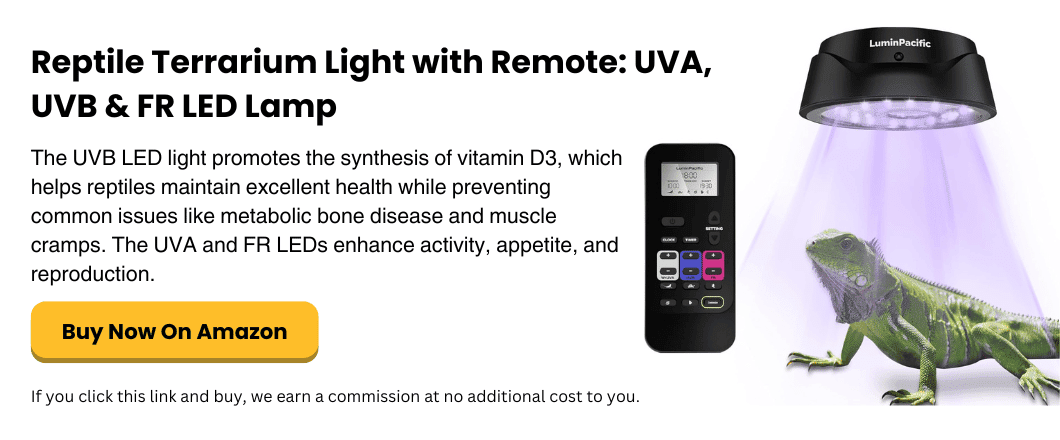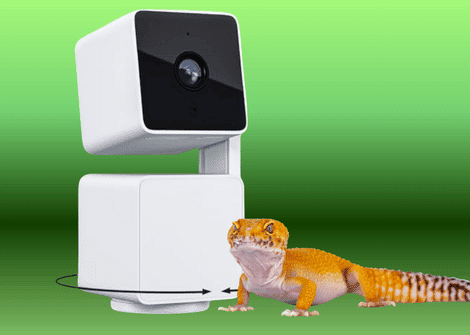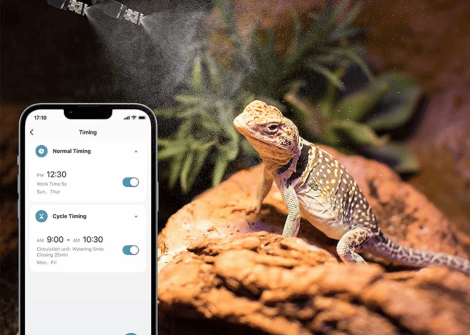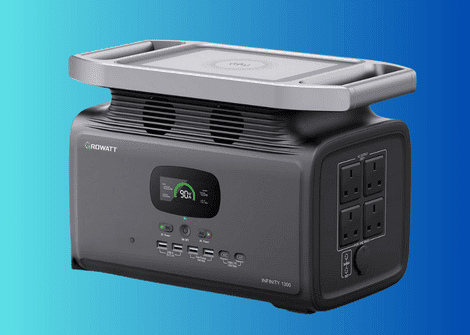Smart Lighting Systems for Reptile Terrariums: Complete Buyer's Guide
Creating the perfect environment for your reptile companion goes far beyond just providing food and water. Lighting plays a crucial role in your pet’s health, behavior, and overall well-being.
With the advent of smart lighting technology, reptile keepers now have unprecedented control over their terrarium environments. Let’s explore how smart lighting systems can revolutionize your reptile care routine.
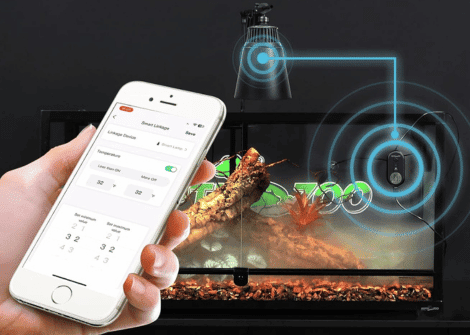
Table of Contents
The Importance Of Proper Terrarium Lighting
Key Features Of Smart Terrarium Lighting Systems
The Benefits Of Upgrading To Smart Lighting
Choosing The Right Smart Lighting System
Installation and Setup
Maintenance and Long-Term Care
Making The Smart Choice For Your Reptile’s Future
Frequently Asked Questions
The Importance Of Proper Terrarium Lighting
Reptiles have evolved under the sun’s natural light cycles, making artificial lighting one of the most critical aspects of captive care. Unlike mammals, reptiles rely heavily on external light sources for essential biological processes, including vitamin D3 synthesis, calcium absorption, and temperature regulation.
Traditional lighting setups often fall short because they can’t replicate the dynamic nature of natural sunlight. The sun’s intensity, color temperature, and UV output change throughout the day, creating complex light cycles that influence reptile behavior, feeding patterns, and breeding cycles. Smart lighting systems bridge this gap by offering programmable, automated solutions that can mimic these natural variations with remarkable precision.
Poor lighting can lead to serious health issues, such as metabolic bone disease, poor appetite, irregular shedding, and compromised immune systems. By investing in a quality smart lighting system, you’re not just creating a more natural environment – you’re actively promoting your reptile’s long-term health and happiness.
Modern smart lighting systems offer a range of features designed to make reptile keeping more convenient and effective.
Programmable timers allow you to set custom lighting schedules that automatically adjust throughout the day, eliminating the need for manual switching and ensuring consistent light cycles even when you’re away from home.
Spectrum control is another game-changing feature. Many smart systems allow you to adjust the color temperature and intensity of different light types, including UVA, UVB, and visible light. This means you can create dawn and dusk simulations with gradual color transitions, just like your reptile would experience in the wild.
Remote monitoring and control capabilities let you manage your terrarium lighting from anywhere using smartphone apps. Whether you’re at work, on vacation, or simply want to make adjustments from your couch, smart systems provide unprecedented convenience and peace of mind.
Temperature integration is particularly valuable, as many smart lighting systems can work in conjunction with heating elements and thermostats to maintain optimal basking temperatures while preventing overheating. Some advanced systems even include sensors that automatically adjust lighting based on ambient room conditions.
The Benefits of Upgrading to Smart Lighting
The advantages of smart terrarium lighting extend well beyond convenience.
Energy efficiency is a significant benefit, as LED-based smart systems typically consume 60-80% less electricity than traditional incandescent or fluorescent bulbs while lasting substantially longer. This translates to meaningful savings on your electricity bill over time.
Improved reptile health is perhaps the most important advantage. Smart systems can provide more accurate UV output, better color rendering, and more natural light cycles. Many reptile owners report increased activity levels, better feeding responses, and more natural behaviors after switching to smart lighting systems.
The automation features eliminate human error and ensure consistency. You’ll never forget to turn lights on or off, and your reptiles will receive reliable light cycles regardless of your schedule. This is particularly valuable for breeding programs where precise photoperiods are crucial for reproductive success.
Data logging capabilities in many smart systems allow you to track lighting patterns, energy usage, and even correlate lighting changes with observed behaviors. This information can be invaluable for optimizing your setup and sharing insights with veterinarians or fellow reptile enthusiasts.
Choosing the Right Smart Lighting System for Your Reptile
Selecting the appropriate smart lighting system depends on several factors, starting with your reptile species.
Desert-dwelling species like bearded dragons require intense UVB and high heat, while forest species such as crested geckos need lower light levels and minimal UV exposure. Research your specific species’ requirements before making a purchase.
Terrarium size and configuration matter significantly. Larger enclosures may require multiple light fixtures or higher-wattage systems to provide adequate coverage. Consider the height of your terrarium as well, since UV intensity decreases rapidly with distance from the source.
Budget considerations should include not just the initial purchase price but also long-term operating costs. While smart LED systems typically have higher upfront costs than traditional lighting, their energy efficiency and longevity often make them more economical over time.
Integration capabilities are worth considering if you already have other smart home devices or terrarium equipment. Some systems work seamlessly with popular home automation platforms like Amazon Alexa, Google Home, or dedicated reptile monitoring systems.
Installation and Setup
Proper installation is crucial for getting the most out of your smart lighting system.
Start by carefully reading the manufacturer’s instructions and ensuring you have all necessary mounting hardware. Most systems include detailed diagrams showing optimal placement for different terrarium sizes and species requirements.
Wire management deserves special attention in humid terrarium environments. Use appropriate waterproof connections and ensure all electrical components are safely positioned away from water sources. Consider using cord covers or cable management solutions to maintain a clean, professional appearance.
During initial setup, take time to properly configure your lighting schedules. Start with basic day/night cycles and gradually add complexity as you become familiar with the system’s capabilities. Many manufacturers provide species-specific programming templates that can serve as excellent starting points.
Testing all features before finalizing your setup is essential. Verify that timers work correctly, color changes occur as programmed, and any smartphone apps connect reliably. This testing phase helps identify any issues while you still have easy access to make adjustments.
Maintenance and Long-Term Care
Smart lighting systems generally require less maintenance than traditional setups, but some routine care is still necessary. LED bulbs typically last 25,000-50,000 hours compared to 1,000-2,000 hours for traditional bulbs, meaning fewer replacements and less disruption to your reptiles.
Regular cleaning of light fixtures and any protective covers ensures optimal light output. Dust, substrate particles, and humidity can all reduce lighting effectiveness over time. Use appropriate cleaning solutions that won’t damage electronic components or leave residues that could affect your reptiles.
Software updates for smart systems should be installed promptly to ensure optimal performance and security. Most systems will notify you when updates are available, and the process is typically straightforward through the manufacturer’s app.
Monitor your reptiles’ response to the lighting system over time. Changes in behavior, appetite, or appearance may indicate that adjustments are needed. Keep notes about any modifications you make and their effects, as this information can be valuable for future fine-tuning.
Making the Smart Choice for Your Reptile's Future
Smart terrariums represent a significant initial investment, typically costing 2-3 times more than equivalent traditional setups. However, when evaluating cost, consider the long-term value proposition.
These systems often reduce electricity costs through efficient LED lighting and precise temperature control. They also minimize the risk of costly veterinary bills resulting from environmental stress or illness.
The convenience factor also has value that’s difficult to quantify. For busy professionals or frequent travelers, the peace of mind and reduced daily maintenance requirements may justify the higher upfront cost. Additionally, the detailed environmental data these systems provide can help optimize your reptile’s health and longevity.
Frequently Asked Questions
If you still have some questions about smart lighting systems for your reptile terrarium, then here are the most commonly asked FAQs, with answers. We hope they help you decide whether to get a smart lighting system or not!
Are smart lighting systems worth the extra cost?
Smart lighting systems typically cost more upfront than traditional timer-based setups, but they often provide better value over time.
The energy efficiency of LED-based smart systems can reduce electricity costs by 60-80%, while the longer lifespan means fewer bulb replacements. More importantly, the precise control over light spectrums and automated scheduling can significantly improve your reptile’s health and behavior.
For serious reptile keepers, the convenience and health benefits usually justify the initial investment.
Can smart lighting systems really provide better UVB for my reptile’s health needs?
Absolutely. Many modern smart lighting systems are designed specifically for reptiles and can provide appropriate UVB levels. However, it’s crucial to choose systems that explicitly state their UVB output and are designed for reptile use.
Look for systems that specify their UVI (UV Index) ratings and are tested for reptile applications. Some smart systems even allow you to adjust UVB intensity throughout the day to mimic natural sunlight patterns, which can be beneficial for species that experience varying UV levels in the wild.
What happens if the Wi-fi goes down or the app stops working?
Quality smart lighting systems are designed with backup functionality that continues operating even during internet outages.
Most systems store your programmed schedules locally, so your lights will continue their normal cycles without WiFi connectivity. You’ll lose remote monitoring and control capabilities during outages, but your reptiles won’t be left in darkness. However, it’s always wise to have a backup plan, such as a simple timer or manual override, for extended outages or system failures.
How difficult is it to set up and program a smart lighting system?
Most smart lighting systems are designed with user-friendly interfaces and smartphone apps that make setup relatively straightforward.
Initial installation typically involves mounting the fixtures and connecting to your WiFi network. Programming usually starts with preset schedules for common reptile species, which you can then customize.
While there may be a learning curve if you’re new to smart technology, manufacturers generally provide detailed instructions and customer support. Many users find the programming easier than managing multiple timers in traditional setups.
Can I use a smart lighting system in my existing terrarium setup?
Most smart lighting systems are designed to integrate with standard terrarium setups, though you may need to make some adjustments.
Check the mounting requirements and ensure your terrarium can accommodate the fixture size and weight.
Many smart systems can work alongside existing heating elements, thermostats, and other equipment. Some advanced systems even integrate with smart thermostats and humidity controllers for comprehensive environmental control.
Always verify compatibility with your specific terrarium dimensions and existing equipment before purchasing. If you go on Amazon, for example, you can get an instant response to your question using the Ask Rufus assistant.
Do smart lighting systems require specialist maintenance or technical knowledge?
Smart lighting systems actually require less maintenance than traditional setups in many ways. LED bulbs last much longer than traditional bulbs, reducing replacement frequency. The main maintenance involves keeping fixtures clean and ensuring software updates are installed when available.
No special technical knowledge is required for routine use, though basic smartphone skills are helpful for initial setup and adjustments. Most issues can be resolved through the manufacturer’s app or customer support, and many systems include diagnostic features that help identify potential problems.
Are smart lighting systems safe for my reptiles? And do they produce harmful electromagnetic interference?
Properly designed smart lighting systems are safe for reptiles and typically produce less heat than traditional incandescent bulbs, reducing overheating risks.
The electromagnetic interference (EMI) from quality smart lighting systems is minimal and well within safe limits for both reptiles and humans.
However, it’s important to purchase systems from reputable manufacturers who follow safety standards and provide proper certifications. Avoid extremely cheap, unbranded smart lights that may not meet safety requirements. Quality systems also include features like overheat protection and surge protection to ensure safe operation.
More Reading
It’s not always an obvious choice for reptile owners, but a smart pet camera is a great and inexpensive way to monitor and enjoy your pet remotely. It also gives you peace of mind they’re ok when you’re not at home.
A smart misting system maintains the proper humidity level in your terrarium. It delivers the right moisture at the right time, helping your pet stay comfortable and healthy, But is it the right choice for you and your pet?
Smart power backup systems automatically maintain critical heating and lighting during outages. They send smartphone alerts to keep you updated, and can keep terrariums running for hours or even days.

